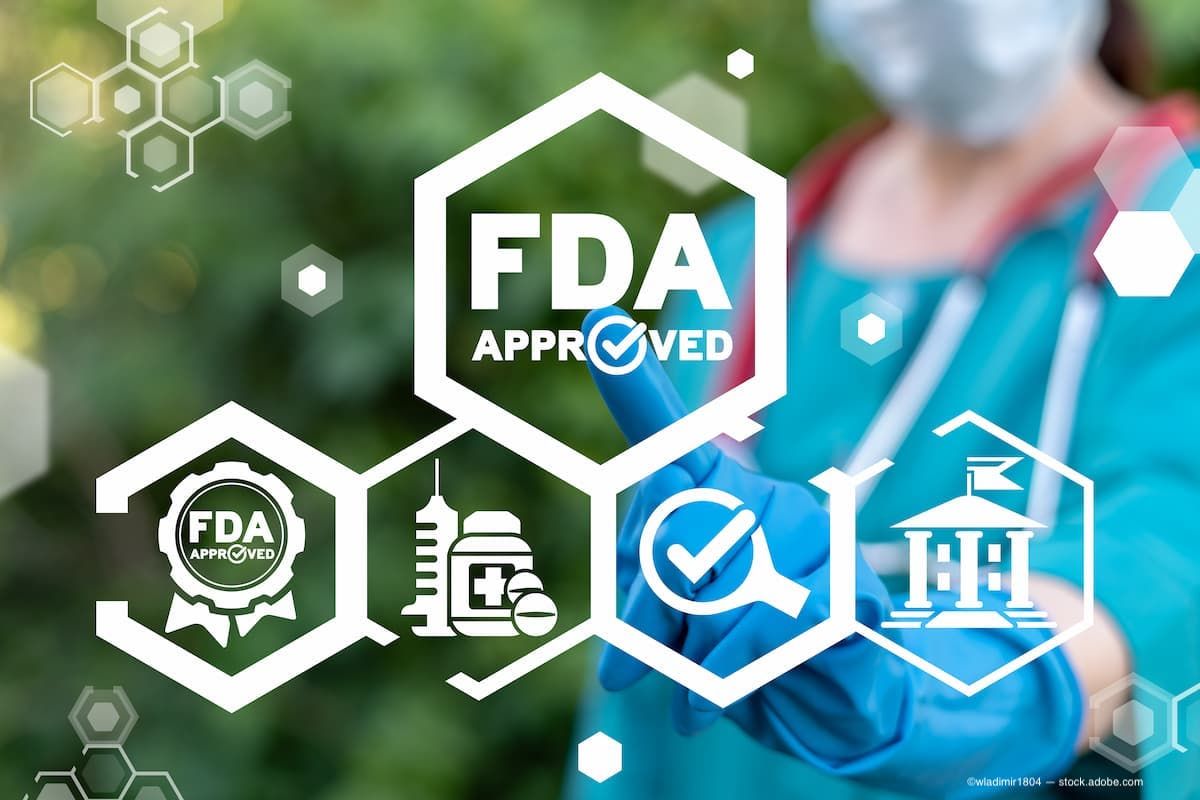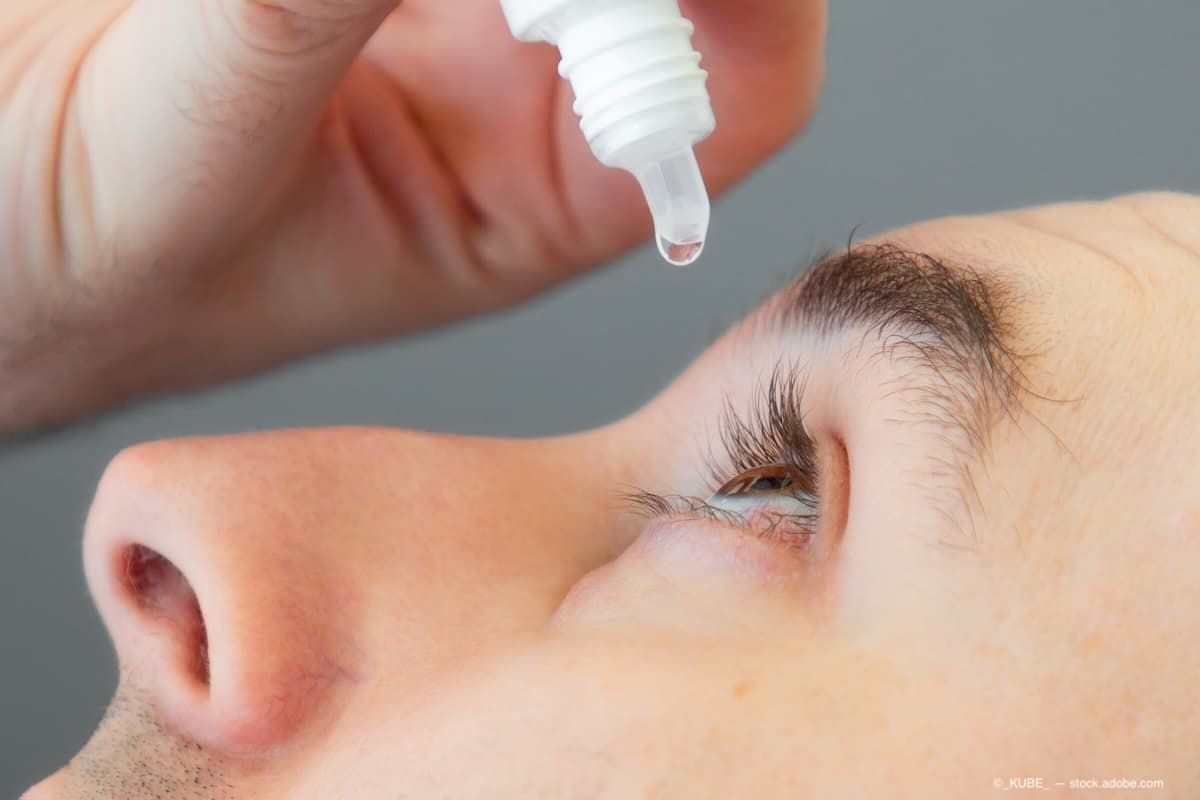Article
FDA approves Novaliq’s cyclosporine ophthalmic solution for treatment of dry eye disease
Author(s):
According to the company, CyclASol is preservative-free and does not contain any oils or surfactants, which can be irritating and disturbing for the tear film.
(Image Credit: AdobeStock/wladimir1804)

Novaliq GmbH announced the U.S. Food and Drug Administration (FDA) has approved cyclosporine ophthalmic solution (Vevye) 0.1% for the treatment of the signs and symptoms of dry eye disease.
According to the company, cyclosporine ophthalmic solution, which had the development name CyclASol, is the first and only cyclosporine solution indicated for the treatment of signs and symptoms of dry eye disease with efficacy demonstrated after 4 weeks of treatment. The water-insoluble active pharmaceutical ingredient cyclosporine is solubilized in the novel excipient perfluorobutylpentane. Cyclosporine ophthalmic solution is preservative-free and does not contain any oils or surfactants, which can be irritating and disturbing for the tear film.
“We are proud that FDA approved VEVYE. The safety and efficacy of VEVYE were assessed in a total of 1369 patients with dry eye disease, of which 738 received VEVYE. VEVYE and its novel vehicle were safe, well tolerated, and demonstrated early, consistent, and durable therapeutic effects,” Sonja Krösser, PhD, vice president Medical Science & Regulatory Affairs at Novaliq, said in a news release. “It is an exciting moment when you have followed science that finally led into a new category of water-free ocular therapies addressing unmet medical needs for patients suffering from dry eye disease.”
John D. Sheppard, MD, MMSc, FACS, professor of ophthalmology at Eastern Virginia Medical School, and Mid-Atlantic Medical Director for Eye Care Partners and investigator in the development program, said in a news release cyclosporine ophthalmic solution addresses the well documented underlying inflammatory root cause of dry eye disease, repeatedly demonstrating early and clinically meaningful efficacy upon both signs and symptoms.
“The clinical trials consistently showed significant therapeutic improvements in ocular surface damage and associated symptoms, while pioneering visual function improvement analysis,” he said in a statement. “VEVYE is an exceptionally well tolerated formulation, combining a novel, first-in-class vehicular delivery system with by far the most established and safe topical active pharmaceutical ingredient, cyclosporine, providing a major advancement for our patients.”
Christian Roesky, PhD, CEO Novaliq, lauded the approval in the news release.
“The US FDA approval of VEVYE marks a milestone for patients and care takers by addressing a significant unmet need for millions of people suffering with this disease,” Roesky said in a statement. “With now two EyeSol® based and water-free dry eye drug therapies approved by FDA Novaliq has established a novel category of non-aqueous, non-preserved ophthalmic drugs with the opportunity to become a standard of care in ophthalmology in the future. We will continue to execute on our mission to transform ocular therapies by developing breakthrough novel EyeSol® therapies way beyond dry eye disease.”
Neda Shamie, MD, a cataract, LASIK and corneal surgeon at Maloney-Shamie Vision Institute in Los Angeles, and co-chief medical editor of Ophthalmology Times, noted the approval was another item of welcome news for ophthalmologists and their patients diagnosed with dry eye disease.
“The FDA approval of CyclaSol 0.1% brings to us and our dry eye patients the first water-free topical anti-inflammatory and immunomodulating ophthalmic solution, containing 0.1% cyclosporine,” Shamie said The higher concentration of the active ingredient solubilized in the novel excipient perfluorobutylpentane, and is preservative and surfactant free. This could offer a potent anti-inflammatory treatment option directed to addressing signs and symptoms of chronic dry eye disease.”
According to Laura M. Periman, MD, director of Dry Eye Services and Clinical Research at the Periman Eye Institute in Seattle, Washington, the immunomodulatory benefits of cyclosporin for addressing ocular surface inflammation are well established.
“However the cyclosporin molecule is highly hydrophobic which creates challenges with drug formulation and delivery,” she said.
Periman added the approval now gives dry eye patients a new option for efficacy and tolerability.
“Alkanes are important in medicine and come in different configurations that impart various attributes,” she added. “Perfluorobutylpentane, the preservative free vehicle for cyclosporin in VEVYE is unique in its ability to carry and deliver the benefits of cyclosporin to the ocular surface with an excellent safety, tolerability and efficacy profile.”
Clinical trials
In clinical trials, investigators led by Esen Akpek, MD, from the Wilmer Eye Institute, The Johns Hopkins University, Baltimore, and colleagues reported the clinically meaningful results of the use of water-free topical cyclosporine 0.1% solution to treat patients with moderate to severe dry eye disease. The study group observed a significantly greater reduction in the total corneal fluorescein staining (tCFS) score compared with the vehicle.1
A treatment that both provides rapid onset of action and is well tolerated could fill an important gap in this patient population, the investigators pointed out.
The ESSENCE-2 study was a randomly assigned, double-masked, vehicle-controlled, clinical trial that assessed the efficacy, safety, and tolerability of a water-free cyclosporine ophthalmic solution. The study included 834 patients with moderate to severe DED who were randomized to active treatment (n=423) or vehicle (n=411) following a 14-day run-in period during which they instilled an artificial tear twice daily. The patients instilled either cyclosporine or vehicle twice daily for 29 days and the results were compared.
The study period ran from December 5, 2020, to October 8, 2021, at 27 US sites. The primary endpoints were the changes in the tCFS (0-15 [best to worst] on the National Eye Institute scale) and in the dryness score (0-100 [best to worst] on the visual analog scale) at day 29 compared with baseline. The investigators also evaluated the conjunctival staining, central corneal fluorescein staining, and the tCFS responders.
ESSENCE-2 results
The patients were a mean age of 57.1 years and almost three-quarters were women. Participants were a mean age of 57.1 years, and 609 (73.0%) were female.
The authors reported the instillation of cyclosporine provided a greater improvement in the tCFS compared with the vehicle, ie, −4.0 grades versus −3.6 grades, respectively, at day 29, a difference that reached significance (P =0 .03). The dryness score improved compared with baseline in both groups, ie, −12.2 points for cyclosporine and −13.6 points for vehicle; the difference between the groups was not significant (P=0 .38).
“In the cyclosporine group, 293 participants (71.6%) achieved clinically meaningful reductions of 3 grades or higher in tCFS vs 236 participants (59.7%) in the vehicle group (change, 12.6%; 95% confidence interval [CI], 6.0%-19.3%; P < 0.001). These responders showed greater improvement in symptoms at day 29, including dryness (change, −4.6; 95% CI, −8.0 to −1.2; P = 0.007) and blurred vision (change, −3.5; 95% CI, −6.6 to −4.0; P =0 .03), compared with non-responders,” the investigators reported.
An important take-away point of the study was that the total and central corneal staining score showed improvements after only 2 weeks of treatment, with persistent efficacy through day 29. The rapid onset and magnitude of improvements of the corneal epithelial damage are potential differentiators to existing therapies, the authors emphasized.
Akpek and David Wirta, MD, an investigator in the study, presented papers at the American Society of Cataract and Refractive Surgery (ASCRS) annual meeting earlier this year in San Diego on results from the 12-month ESSENCE-2 open label extension study and the pooled analysis of ESSENCE-1 and ESSENCE-2, the two pivotal studies, looking into subgroups with and without cataract.
“The long-term data confirm the excellent safety and tolerability profile of CyclASol,” Wirta said in a statement prior to ASCRS. “Notably, all studied dry eye symptom scores showed a constant reduction reaching a minimum after 1 year of treatment combined with high patient satisfaction rates. If approved this treatment will address important patient needs.”
Newsletter
Don’t miss out—get Ophthalmology Times updates on the latest clinical advancements and expert interviews, straight to your inbox.




